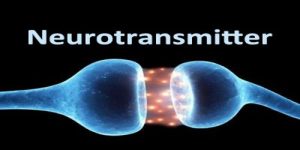by Jack
Lesson 1 – A healthy brain
Dementia is part of the aging process. As we age our brains shrink; we become more forgetful and our cognitive functions are impaired to some degree. However, the upside is, our brain is a very resilient organism and there are ways we can easily moderate our inevitable age-related decline. Challenging your brain to learn new things is a start. By just reading this article you are exercising your brain and that’s going to help you!
 There are about 100 billion neurons (or nerve cells)in a single human brain (see left) and many more neuroglia (or glial cells) that control such things as memory, emotion, pain response, reasoning, etc., but we only use a small portion of them, the rest are an untapped resource. By both protecting your existing network (brain wiring) that you’ve created over the years and also opening up new neurosynapes pathways, we can fight the ravages of age and even enhance our brain’s cognitive functions.
There are about 100 billion neurons (or nerve cells)in a single human brain (see left) and many more neuroglia (or glial cells) that control such things as memory, emotion, pain response, reasoning, etc., but we only use a small portion of them, the rest are an untapped resource. By both protecting your existing network (brain wiring) that you’ve created over the years and also opening up new neurosynapes pathways, we can fight the ravages of age and even enhance our brain’s cognitive functions.
Think of a brain neuron like a memory chip in a computer and in our brain/computer, a single neuron may be connected to up to 10,000 other neurons, passing signals to each other via as many as 1,000 trillion synaptic connections. This is equivalent, by some estimates, to a computer with a 1 trillion bit per second processor. This is an astounding feat unmatched by our most advanced computers. To take this one step further, our brains have approximately 3,333 times more synaptic connections than there are stars in our galaxy. Pretty amazing isn’t it?
estimates, to a computer with a 1 trillion bit per second processor. This is an astounding feat unmatched by our most advanced computers. To take this one step further, our brains have approximately 3,333 times more synaptic connections than there are stars in our galaxy. Pretty amazing isn’t it?
To summarize, a neurotransmitter is a specialized messenger chemical that transfers or sends information from one type of cell to another. Now you get a rough idea why these connections and distribution centers are so important to healthy brain function. In the case of Alzheimer’s, science strongly believes our neurosynaptic connections are being interrupted by the formation of beta amyloid plaque. This plaque blocks the transfer of  data which is most visible to us as…. severe memory loss and cognitive impairment. (See left)
data which is most visible to us as…. severe memory loss and cognitive impairment. (See left)
Researchers are focusing on the prevention of plaque more than the cure because the neurosynapes may be so badly damaged after plaque forms, it could be irreversible. So, it’s far more practical to focus on prevention than a cure at this stage of medicine. Think of this as, snuffing out a match before the forest is set ablaze.
What you can do to help yourself: Of course diet and exercise play a key role. Walking briskly as little as 40 minutes a day times a week can really help. Doctors suggest you start off slowly, then increase your time by 5 minutes a week until you reach your goal.
Next, diet. A diet of red, green, yellow and orange foods is a good start. Think “rainbow” when shopping for fresh foods. For example, the color yellow is associated with vitamin A, essential to good health. It has been helpful in many ways, such as:
 Vitamin A activities (e.g. improve vision health)
Vitamin A activities (e.g. improve vision health) - Free radical scavengers (prevent diseases, slow down the process of aging and degeneration of brain cells)
- Protect/Prevent/Repair DNA damage (suppress tumors)
- Immune booster (protect against common cold, destroys foreign micro-organisms like bacteria, viruses, parasites)
You don’t have to eat much fresh foods to get the maximum benefit, usually an ounce or two is sufficient. What you can fit in the palm of your hand is often enough, then use this as component with other foods or a garnish on salad.
But, can’t taking a daily vitamin accomplish the same thing as eating fresh foods? The verdict on taking a daily vitamin is still out, but what we do know for a fact is, taking some vitamin pills can be counter-productive. For example, vitamin E, an essential vitamin and a fantastic antioxidant for fighting plaque, however when it’s taken in pill form this large single dose can block up to 7 other types of vitamin E found in fresh foods. You need all 8 types of vitamin E to get the best results.
Life-long learning: Brain wiring (function) can be improved by challenging yourself to learn new things, as I said at the beginning of this article. But, what should I learn, you may wonder? It doesn’t matter, just do it. Take a sewing class, learn Italian, read more, do crossword puzzles, but engage your brain and do things that are challenging. The results can be nothing short of spectacular, depending of course on how much effort you are willing to put forth. Just like anything else, the more you do, the better you get, right?
This short article is by no means all you need to make aging as trouble free as possible, but it’s a step in the right direction. I hope it’s motivated you to do the rest on your own. Good luck, now get going!

Thanks for this article Jack. It gave me motivation to start reading more & finding things that will help my memory. At 77 years young I can tell my memory is slipping.
Hi Rosemary, good to hear from you and I’m glad you found this helpful, you made my day. Please don’t be a stranger here, this is a good forum to challenge your thinking. Consider it a place for free cognitive therapy! We argue, provoke, support, debate, educate and just vent for the fun of it, but it’s all good and I would like to think at the end of the day we remain friends.